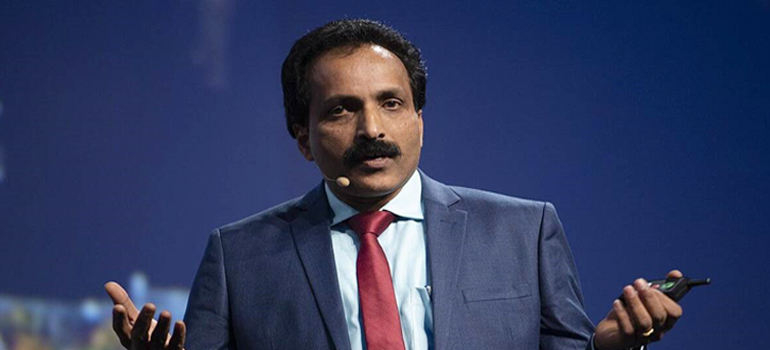
One of the main speakers at the annual conference of the Indian Society of Aerospace Medicine in September 2018 was a top rocket scientist from ISRO. During an interval in the meeting, the scientist stayed back in the empty lecture hall to pore over his presentation a final time, rather than joining IAF officers and others for a coffee break.
“Sending a human being into space is a different ball game compared to sending a passive satellite into orbit. The orbit is a zero gravity environment and we need to keep a person alive and ensure survival during return to earth. It is quite easy to launch a person into space, but quite difficult to bring him back,” Dr S Somanath, the director of ISRO’s Vikram Sarabhai Space Centre, who was named the next chairman of ISRO on Wednesday, said when his turn came at the conference.
“The immediate milestone is to put a man in orbit by 2022, and to see how we can do that with current levels of knowledge and the new knowledge that has to be created,’” Somanath said.
As he takes over as the 10th ISRO chairman, succeeding K Sivan, that will be one of the biggest challenges before Somanath — putting the agency’s human space flight programme back on track following setbacks due to launch failures, the Covid-19 outbreak, and a general slowdown since the failure of the Chandrayaan 2 robotic moon landing mission in September 2019.
As director of the Vikram Sarabhai Space Centre since 2018, and as head of the Liquid Propulsion Systems Centre, Somanath has been closely associated with developing the key rocket technology that will go into the mission.
He was the project director and mission director for the development of the GSLV Mk-III rocket that will be used for the programme. He has also been involved in making it usable for human flight in recent days.
“The GSLV Mk III is an intelligent system, but for a final human rating, the redundancies needed are of a higher order. We are working on it,” Somanath has said.
A human-rated version of the GSLV-Mk III is yet to be tested along with a crew module. The clock is ticking given Prime Minister Narendra Modi’s vision of a human space flight before 2024, say ISRO observers.
Among other key achievements attributed to Somanath is the development of throttleable engines — a technology used for the Chandrayaan-2 lander. Throttleable engines will be a key part of a new category of test rockets that ISRO is developing to test the crew module for human space flight.
ISRO, in fact, has so far conducted only one successful test flight of the crew module — called the Crew module Atmospheric Re-Entry Experiment or CARE — on December 18, 2014, using the high-end GSLV Mk III rocket, with Somanath as the project director.
Somanath is also a key figure in the development of a much-awaited programme that is expected to give ISRO a leg-up in carrying out small satellite launches for private firms, educational institutions and developing countries.
A topper in science and mathematics in Class 10 and a rank holder at Kerala University, Somanath initially dreamed of becoming a doctor before taking up engineering. He has a master’s degree from IISc and has been a student of the Ph.D. program of IIT Madras.
A former chairman of ISRO said Somanath has a passion for science communication and a down to earth approach to science, which is much needed at a critically low juncture in ISRO’s history.
In one of his final communications — a New Year letter to the staff at ISRO – outgoing chairman Sivan, who was on a year’s extension since January last year, admitted that the space agency had not fared too well recently. “There is a feeling that very little happened in ISRO during 2021. That feeling is primarily due to the less number of launches,” Sivan said.
There has been a sense in recent years that ISRO’s focus has been on generating publicity and political mileage, to please the government, rather than on science and engineering.
The space agency has also been non-communicative since the failure of the Chandrayaan 2 mission in 2019, a much-hyped event which was attended by PM Modi. The agency did not put out a failure analysis report in the public domain as it did routinely in the past.
Original News Link
https://indianexpress.com/article/india/isro-prepares-manned-mission-7720407/